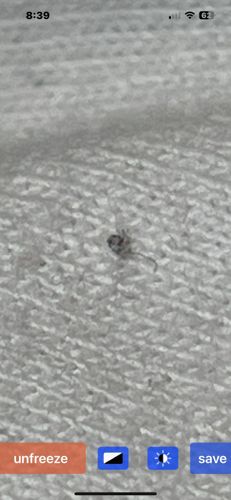Dust Mite
Scientific Name: Dermatophagoides spp. (e.g., Dermatophagoides pteronyssinus, Dermatophagoides farinae)
Order & Family: Acariformes, Pyroglyphidae
Size: Approximately 0.2-0.3 mm (microscopic, invisible to the naked eye)

Natural Habitat
Warm, humid environments, commonly found indoors in bedding, mattresses, pillows, upholstered furniture, carpets, rugs, and curtains.
Diet & Feeding
Organic detritus, primarily dead human and animal skin flakes (dander).
Behavior Patterns
Dust mites are microscopic and thrive in warm, humid environments. They feed on organic detritus such as flakes of shed human and animal skin (dander). They are not parasitic but can contribute to allergic reactions in sensitive individuals. They are most active in bedding, upholstered furniture, and carpets where their food source is abundant. They reproduce quickly under ideal conditions.
Risks & Benefits
Potential Risks: Dust mites are a common trigger for allergies and asthma. Their feces and decaying body parts can become airborne and inhaled, leading to symptoms such as sneezing, runny nose, itchy eyes, skin rashes, and difficulty breathing. They do not bite or transmit diseases. Potential Benefits: In their natural role, they contribute to the decomposition of organic matter, although their presence indoors can be problematic for human health.
Identified on: 8/29/2025